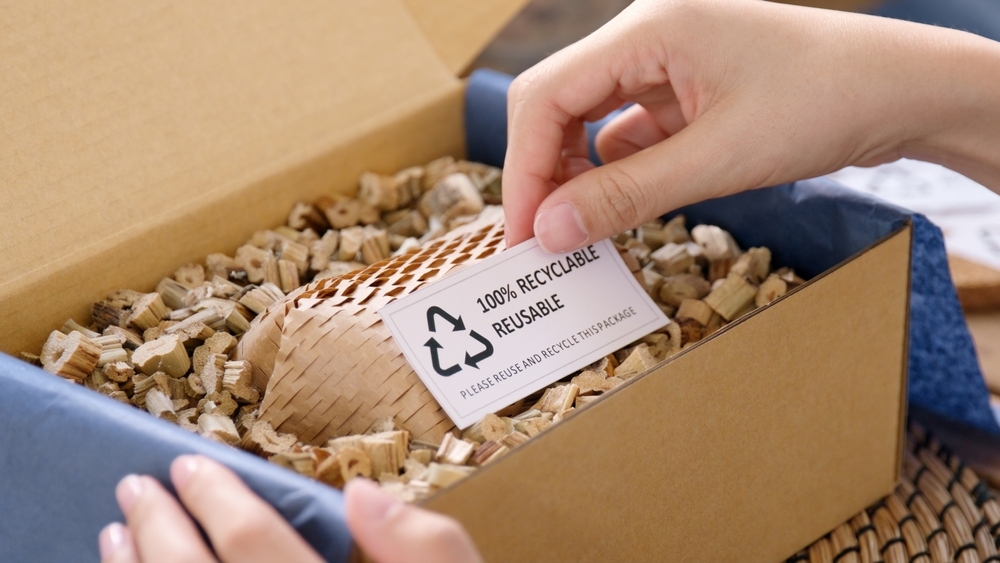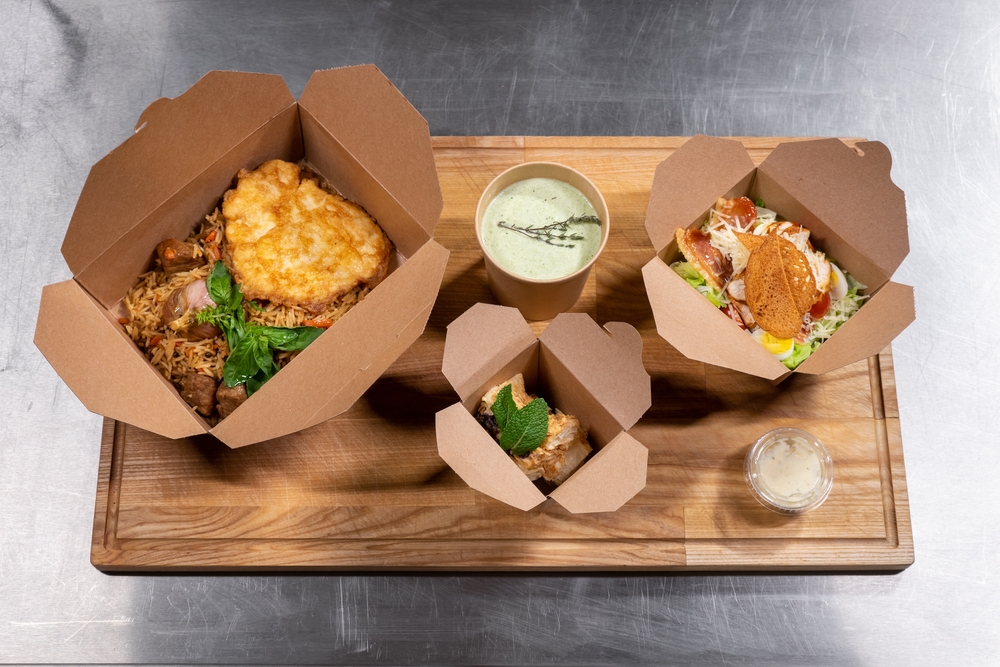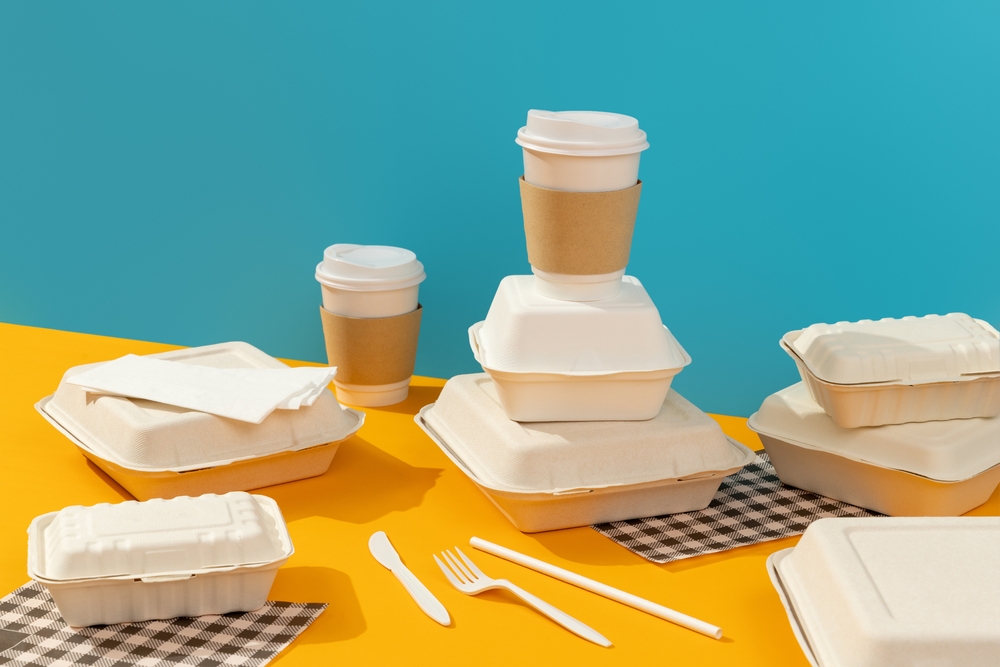Unlocking the Benefits of Reusable Packaging for a Sustainable Future
By Anttoni Taimela · 1. April 2024
Curious about the impact of reusable packaging and how it factors into sustainable living and business practices?
This concise guide cuts through the noise to deliver essential facts about reusable packaging🔄📦.
From its environmental and economic benefits to the steps for smooth integration, learn how embracing reuse can make a significant difference in reducing waste—practical insights for eco-minded individuals and businesses alike await.
Exploring the World of Reusable Packaging
 Reusable Packaging
Reusable Packaging
What if I told you that your takeaway coffee cup could be used more than once, or that the container your lunch came in could serve you multiple times without losing its charm?
Enter the world of reusable packaging, a durable, eco-friendly solution designed for multiple uses.
From bring-your-own containers to restaurant-provided products and deposit schemes, the options are as varied as they are innovative.
No longer confined to mere plastic totes, reusable containers now come in a variety range of forms. The role of reusable packaging extends beyond just being a container.
It’s a knight in shining armor for our environment, helping reduce waste, combat pollution, and lower energy use typically needed to produce new materials.
Adopting a waste hierarchy that stresses prevention, reuse, and recycling allows for a strategic approach to sustainable packaging waste management.
The future of reusable packaging looks promising, with innovations💡 like customized solutions, smart options, and consumer participation programs on the horizon.
Ready to play a part in this circular economy model?.
The Role of Reusable Containers in Reducing Plastic Waste
Did you know the simple act of using a reusable water bottle or travel mug can significantly reduce plastic waste accumulation in bodies of water and public spaces?.
Reusable containers are like the superhero of our time, helping reduce plastic waste🚯 and conserve raw materials.
Adopting reusable containers doesn’t only reduce waste but also promotes safer alternatives and cuts down on the production of new plastic and raw materials too.
But it’s not just about the big picture. Every small action counts.
Choosing to refill your reusable water bottle or using refillable containers for your groceries can significantly lower the waste generated and the energy required to produce new packaging.
Navigating the Shift from Disposable to Reusable Solutions
Switching to reusable packaging might seem like a daunting task for businesses, but with the right strategy, it’s a journey worth taking.
Before embarking on this route, businesses need to consider various factors such as:
- the volume of shipments
- return routes
- available space on return journeys
- transport distances
These considerations will ensure a smooth and efficient transition of reused together.
This journey doesn’t have to be solitary.
Companies can collaborate to share costs related to the handling, maintenance, and transportation of reusable packaging, fostering sustainable logistics operations.
Of course, like any change, transitioning to reusable packaging comes with its set of challenges.
From consumer acceptance and lack of infrastructure to regulatory demands and associated costs, the road to reusable packaging is not without its bumps.
But fear not, for every challenge, there’s a solution. Here are some strategies to overcome these challenges:
- Engaging customers in the transition
- Addressing hygiene concerns and educating them to perceive reusable containers as sanitary and safe
- Offering options for customers to either bring their own containers or use and return a business-provided reusable container
By implementing these strategies, businesses can promote sustainability and successfully transition to reusable packaging.
The e-commerce sector, in particular, faces a unique set of challenges with reusable packaging.
For instance, optimizing the process for returns in the small parcel shipping environment can be a significant hurdle.
But don’t let these challenges deter you. Investing in reverse logistics infrastructure and maintaining dual systems during the transition period can help overcome these obstacles.
The Lifecycle of Reusable Packaging Products
The lifecycle of reusable♻️ packaging is a story worth telling.
It begins in the manufacturing phase, where various forms of packaging such as pallets, containers, and returnable systems are designed to be durable, collapsible, and stackable for industrial applications.
Once manufactured, these champions of sustainability are distributed via boats, trains, planes, or trucks to their various intended destinations.
The story doesn’t end there. The use phase involves consumers utilizing the used packaging for storage and multiple reuses.
This includes removing adhesive labels and pre-washing with high-pressure clean water to maintain hygiene and prevent contamination.
As all good things must come to an end, so does the lifecycle of reusable packaging.
But not without a sustainable farewell.
At the end of its lifecycle, reusable packaging may be recycled, composted, or disposed of in a landfill, depending on the material composition and the availability of suitable local facilities.
Cost-Benefit Analysis: Reusable vs. Single-Use Packaging
Let’s talk numbers, shall we? While it’s true that reusable packaging involves higher upfront costs, its long-term benefits are worth considering.
With reusable packaging, the cost is distributed across its lifespan, leading to economies of scale and savings compared to repeated purchases of single-use packaging.
However, the benefits of further use of reusable packaging extend beyond mere cost.
Adopting reusable packaging offers the following advantages:
- Maximizes supply chain efficiency
- Enhances a brand’s reputation for sustainability
- Generates a significantly lower carbon footprint and material use than single-use packaging
- Provides a more sustainable option throughout its lifecycle
And it’s not just about the present benefits.
Companies transitioning to reusable packaging are future-proofing their operations against the risks of environmental regulations, potentially incurring fines, and damage to their reputation.
Sustainable Materials in Reusable Packaging Manufacture
 Sustainable Materials in Reusable Packaging
Sustainable Materials in Reusable Packaging
The story of reusable packaging isn’t just about recyclable and reusing.
It’s also about the materials that make up the packaging.
From Kraft paper and glassine to aluminum, steel, and corrugated materials, each material plays a part in promoting recyclability and eco-friendliness.
Even recycled metals, like aluminum, play a significant part in resource conservation, diminishing demand for virgin materials, and curbing greenhouse gas emissions.
But the script doesn’t end there. Recycled♻️ plastics give new life to materials in circulation, lessening the load on landfills, and exemplifying a circular economy.
Reusable containers often use materials considered safe for the environment and human health, diminishing the hazards associated with certain plastics.
In the cosmetic industry, some brands are taking it a step further by adopting innovative, recyclable, and compostable materials for their packaging.
So, the next time you pick up a reusable container, remember, it’s more than just a container. It’s a story of sustainability.
How Food Service Businesses Can Implement Reusable Takeaway Packaging
 top view kraft paper food containers
top view kraft paper food containers
For food service businesses, reusable packaging offers a unique opportunity to enhance customer experience while promoting sustainability.
By offering a mix of reusable packaging options alongside responsibly sourced, recyclable, or compostable disposables, businesses can cater to diverse customer preferences and needs.
And it’s not just about the packaging. Businesses can enhance their brand image through custom printed hot food packaging, available in numerous styles and sizes.
But the journey doesn’t end at offering options. Supporting customers throughout the product’s lifecycle is crucial for businesses. This includes:
- Providing clear instructions for refilling reusable containers
- Using environmentally friendly materials
- Allowing customers to bring their own clean containers
Success Stories: Companies Embracing Reusable Packaging Systems
 Reusable Packaging use in a store
Reusable Packaging use in a store
Embracing reusable packaging systems isn’t just a trend, it’s a journey towards sustainability.
And many companies are already leading the way. Take JUST Water, for instance.
They use paper and aluminum for water packaging to lower environmental impact.
Then there’s Puma’s reusable shoebox-cum-bag, reducing the need for additional packaging materials.
Major brands like Procter & Gamble and Unilever are also jumping on the bandwagon, participating in the Loop initiative by TerraCycle, rethinking packaging design for durability and multiple uses across several product lines.
Companies like Plaine have seen positive results by offering bathroom products in aluminum bottles that customers can return for refilling or recycling instead of contributing to landfill waste.
These company success stories serve as a beacon of hope, inspiring businesses and consumers alike to embrace reusable packaging systems.
Reusable Packaging and E-commerce: A Growing Trend
In the e-commerce world, the trend of reusable packaging is picking up pace.
From reusable shopping bags and totes to shipping containers and packaging return programs, e-commerce brands are embracing sustainability like never before.
However, this doesn’t guarantee a smooth journey.
E-commerce brands face unique challenges to reduce waste and enhance the customer unboxing experience while adopting less material-intensive and reusable packaging solutions.
One strategy that has proven beneficial for e-commerce and supply chain and chains is pallet pooling in distribution centers.
This alleviates the need to purchase transport packaging and decreases transport and storage costs.
While the shift to reusable packaging could lead to an increase in costs by 50 to 200 percent and a potential growth in CO2 emissions due to additional handling and transport needs, the long-term benefits outweigh the short-term challenges.
The Minimum Number of Uses for Maximum Impact
Reusable packaging is not just about reusing once or twice.
To achieve maximum environmental impact, reusable packaging must undergo multiple trips, with a minimum number of uses.
For instance, more than 20 rotations are needed for reusable packaging to begin offering environmental benefits in terms of emissions reductions compared to single-use packaging.
The numbers might seem daunting, but every rotation counts.
Reusable containers must be used between 16 to 208 times to match the environmental impact of a single-use Styrofoam® container in terms of resource consumption.
Reusable metal coffee cups, often used for hot beverages, require between 20 and 100 uses to compensate for their higher greenhouse gas emissions when compared to disposable cups.
Even in the takeaway food service industry, reusable packaging may need up to 200 rotations to become environmentally viable.
So, each time you use your reusable coffee cup or other takeaway food container, remember, you’re contributing to a larger cause.
The Importance of Recycling in the Reusable Packaging Life Cycle
Despite reusable packaging and beauty products being designed for multiple uses, it inevitably reaches the end of its lifecycle.
This is where recycling steps in. Closing the material loop in a circular economy is crucial, and recycling is an essential process for achieving this when items are no longer reusable.
High recycling rates are essential for reusable packaging systems, particularly if they don’t reach high rotation numbers.
This includes:
- Designing systems that integrate easily with existing recycling streams
- Technological advances in recycling have enhanced the recyclability of plastic packaging
- Specialized methods are required for recycling materials like low-density polyethylene film used in bubble wrap.
Encouraging Consumer Participation in Reusable Systems
Securing consumer participation in the reusable packaging movement is vital for the success of these systems.
While consumers show a positive attitude towards reusable packaging, they have concerns about product quality, safety, contamination, and the extra effort required for use.
To address these concerns, businesses can implement strategies like offering deposit schemes, designing appealing dispensers, and providing financial incentives for customizing product portions.
Providing trustworthy information and addressing concerns about the environmental impact, product quality, and availability are crucial for the long-term adoption of reusable packaging systems.
Consumers tend to show a preference for refillable systems where they are responsible for cleaning and filling, due to the added convenience these models provide.
So, are you ready to embrace reusable systems?
Cleaning and Sanitation Protocols for Reusable Items
Maintaining reusable items goes beyond simple reuse; it involves ensuring their cleanliness and food safe qualities.
Proper cleaning and disinfection are critical factors for ensuring food safety and maintaining the lifespan of reusable food and beverage containers.
Inadequate cleaning and hygiene programs for reusable containers can lead to increased food safety risks and negative customer experiences.
From implementing advanced drying techniques to selecting appropriate detergents and solvents for cleaning, every step matters in maintaining the hygiene and longevity of reusable containers.
Employees involved in the cleaning process should also protect themselves by wearing personal protective equipment (PPE).
And importantly, businesses should clearly communicate about their hygiene standards to alleviate any concerns and encourage consumer participation.
Finding the Perfect Solution: Custom Reusable Packaging Options
 Custom Reusable Food Packaging Options
Custom Reusable Food Packaging Options
Locating the ideal reusable packaging solution for your business can be likened to finding the perfect pair of shoes.
It needs to be the right fit, functional, and appealing.
Custom reusable packaging can include:
- Handling trays
- Catering trays with lids
- Custom-sized vial trays with bespoke cell configurations
- Trays made from durable, microwavable, and fridge-safe materials, offering an alternative to disposable packaging.
Features such as clear high dome lids for buffet trays are specifically designed to maintain food freshness while enhancing the visibility of the product, demonstrating the attention to detail in custom reusable packaging designs.
The market shift towards reusable packaging allows for innovative and aesthetic designs that can enhance a brand’s image, providing functional as well as visually appealing packaging solutions.
Businesses also have the option to order free samples of reusable packaging to perform hands-on testing with their specific dishes before making larger purchasing decisions.
So, are you ready to find the perfect fit for your business?
Summary
From introducing the world of reusable packaging to exploring its role in reducing plastic waste, navigating the shift from disposable to reusable solutions, and understanding the lifecycle of reusable packaging products, we’ve traversed an exciting journey.
We’ve delved into the cost-benefit analysis📈 of reusable vs. single-use packaging, explored sustainable materials in reusable packaging manufacture, and looked at how food service businesses can implement reusable takeaway packaging.
We’ve been inspired by success stories of companies embracing reusable packaging systems, navigated the growing trend of reusable packaging in e-commerce, and discovered the minimum number of uses for maximum impact.
We’ve underscored the importance of recycling in the reusable packaging life cycle, encouraged consumer participation in reusable systems, explored cleaning and sanitation protocols for reusable items, and found the perfect custom reusable packaging options.
As we close this chapter, remember, every small step towards embracing reusable packaging is a giant leap for our planet.
Frequently Asked Questions
Is reusable packaging actually better for the environment?
Yes, reusable packaging is better for the environment as the majority of studies show it has lower environmental impacts compared to single-use packaging. So, go green and opt for reusables!
What is an example of reusable food packaging?
You can find reusable food packaging in products like quinoa in a canister or face cream in a jar. After use, the empty packaging can be sent back for cleaning and refilling, contributing to a closed-loop circular economy. It’s a simple and cost effective, way to reduce waste.
What are the disadvantages of reusable packaging?
Reusable packaging can lead to logistics, transport challenges and expensive problems if there is a weak relationship with customers and a solid return system is not in place. Additionally, the initial purchase and modification costs can be a disadvantage.
What are the benefits of refillable packaging?
Refillable packaging offers benefits such as durability, ease of use, and cleaning, alongside reducing waste and carbon footprint. It’s a win-win for the environment and your convenience!
What challenges do businesses face when transitioning to reusable packaging?
Transitioning to reusable packaging can be tricky for businesses due to consumer acceptance, infrastructure, regulatory demands, product safety, and costs. Despite the challenges, with the right strategies and collaboration, these obstacles can be overcome.

